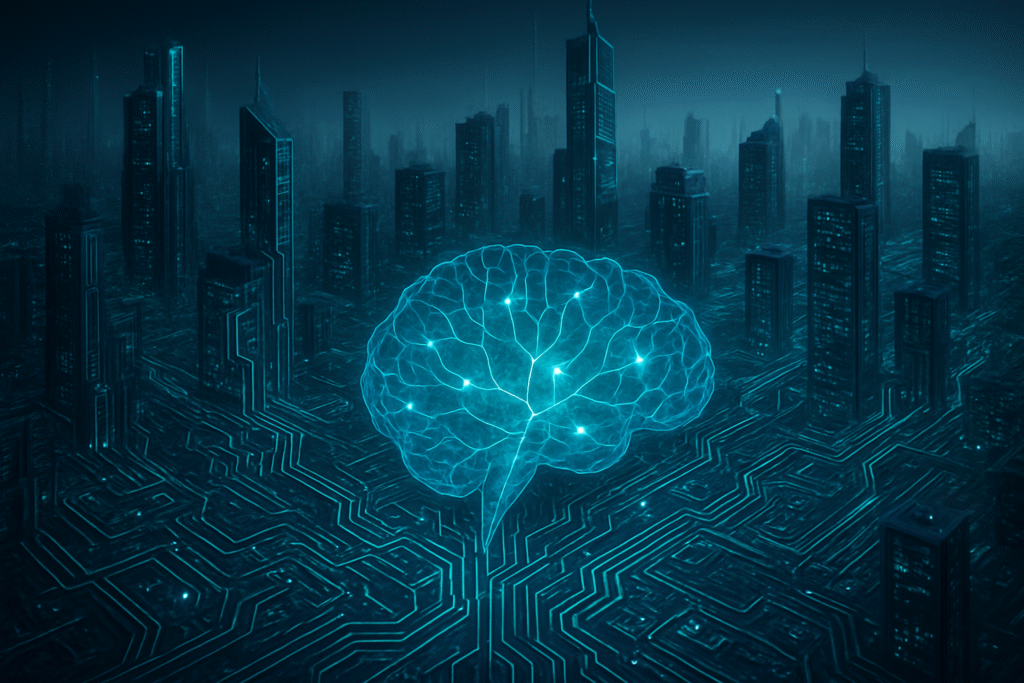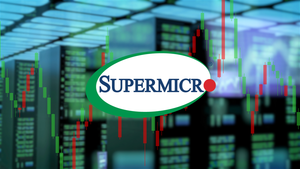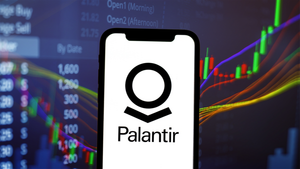
The burgeoning field of artificial intelligence, particularly the explosive growth of deep learning, large language models (LLMs), and generative AI, is pushing the boundaries of what traditional computing hardware can achieve. This insatiable demand for computational power has thrust semiconductors into a critical, central role, transforming them from mere components into the very bedrock of next-generation AI. Without specialized silicon, the advanced AI models we see today—and those on the horizon—would simply not be feasible, underscoring the immediate and profound significance of these hardware advancements.
The current AI landscape necessitates a fundamental shift from general-purpose processors to highly specialized, efficient, and secure chips. These purpose-built semiconductors are the crucial enablers, providing the parallel processing capabilities, memory innovations, and sheer computational muscle required to train and deploy AI models with billions, even trillions, of parameters. This era marks a symbiotic relationship where AI breakthroughs drive semiconductor innovation, and in turn, advanced silicon unlocks new AI capabilities, creating a self-reinforcing cycle that is reshaping industries and economies globally.
The Architectural Blueprint: Engineering Intelligence at the Chip Level
The technical advancements in AI semiconductor hardware represent a radical departure from conventional computing, focusing on architectures specifically designed for the unique demands of AI workloads. These include a diverse array of processing units and sophisticated design considerations.
Specific Chip Architectures:
- Graphics Processing Units (GPUs): Originally designed for graphics rendering, GPUs from companies like NVIDIA (NASDAQ: NVDA) have become indispensable for AI due to their massively parallel architectures. Modern GPUs, such as NVIDIA's Hopper H100 and upcoming Blackwell Ultra, incorporate specialized units like Tensor Cores, which are purpose-built to accelerate the matrix operations central to neural networks. This design excels at the simultaneous execution of thousands of simpler operations, making them ideal for deep learning training and inference.
- Application-Specific Integrated Circuits (ASICs): ASICs are custom-designed chips tailored for specific AI tasks, offering superior efficiency, lower latency, and reduced power consumption. Google's (NASDAQ: GOOGL) Tensor Processing Units (TPUs) are prime examples, utilizing systolic array architectures to optimize neural network processing. ASICs are increasingly developed for both compute-intensive AI training and real-time inference.
- Neural Processing Units (NPUs): Predominantly used for edge AI, NPUs are specialized accelerators designed to execute trained AI models with minimal power consumption. Found in smartphones, IoT devices, and autonomous vehicles, they feature multiple compute units optimized for matrix multiplication and convolution, often employing low-precision arithmetic (e.g., INT4, INT8) to enhance efficiency.
- Neuromorphic Chips: Representing a paradigm shift, neuromorphic chips mimic the human brain's structure and function, processing information using spiking neural networks and event-driven processing. Key features include in-memory computing, which integrates memory and processing to reduce data transfer and energy consumption, addressing the "memory wall" bottleneck. IBM's TrueNorth and Intel's (NASDAQ: INTC) Loihi are leading examples, promising ultra-low power consumption for pattern recognition and adaptive learning.
Processing Units and Design Considerations:
Beyond the overarching architectures, specific processing units like NVIDIA's CUDA Cores, Tensor Cores, and NPU-specific Neural Compute Engines are vital. Design considerations are equally critical. Memory bandwidth, for instance, is often more crucial than raw memory size for AI workloads. Technologies like High Bandwidth Memory (HBM, HBM3, HBM3E) are indispensable, stacking multiple DRAM dies to provide significantly higher bandwidth and lower power consumption, alleviating the "memory wall" bottleneck. Interconnects like PCIe (with advancements to PCIe 7.0), CXL (Compute Express Link), NVLink (NVIDIA's proprietary GPU-to-GPU link), and the emerging UALink (Ultra Accelerator Link) are essential for high-speed communication within and across AI accelerator clusters, enabling scalable parallel processing. Power efficiency is another major concern, with specialized hardware, quantization, and in-memory computing strategies aiming to reduce the immense energy footprint of AI. Lastly, advances in process nodes (e.g., 5nm, 3nm, 2nm) allow for more transistors, leading to faster, smaller, and more energy-efficient chips.
These advancements fundamentally differ from previous approaches by prioritizing massive parallelism over sequential processing, addressing the Von Neumann bottleneck through integrated memory/compute designs, and specializing hardware for AI tasks rather than relying on general-purpose versatility. The AI research community and industry experts have largely reacted with enthusiasm, acknowledging the "unprecedented innovation" and "critical enabler" role of these chips. However, concerns about the high cost and significant energy consumption of high-end GPUs, as well as the need for robust software ecosystems to support diverse hardware, remain prominent.
The AI Chip Arms Race: Reshaping the Tech Industry Landscape
The advancements in AI semiconductor hardware are fueling an intense "AI Supercycle," profoundly reshaping the competitive landscape for AI companies, tech giants, and startups. The global AI chip market is experiencing explosive growth, with projections of it reaching $110 billion in 2024 and potentially $1.3 trillion by 2030, underscoring its strategic importance.
Beneficiaries and Competitive Implications:
- NVIDIA (NASDAQ: NVDA): Remains the undisputed market leader, holding an estimated 80-85% market share. Its powerful GPUs (e.g., Hopper H100, GH200) combined with its dominant CUDA software ecosystem create a significant moat. NVIDIA's continuous innovation, including the upcoming Blackwell Ultra GPUs, drives massive investments in AI infrastructure. However, its dominance is increasingly challenged by hyperscalers developing custom chips and competitors like AMD.
- Tech Giants (Google, Microsoft, Amazon): These cloud providers are not just consumers but also significant developers of custom silicon.
- Google (NASDAQ: GOOGL): A pioneer with its Tensor Processing Units (TPUs), Google leverages these specialized accelerators for its internal AI products (Gemini, Imagen) and offers them via Google Cloud, providing a strategic advantage in cost-performance and efficiency.
- Microsoft (NASDAQ: MSFT): Is increasingly relying on its own custom chips, such as Azure Maia accelerators and Azure Cobalt CPUs, for its data center AI workloads. The Maia 100, with 105 billion transistors, is designed for large language model training and inference, aiming to cut costs, reduce reliance on external suppliers, and optimize its entire system architecture for AI. Microsoft's collaboration with OpenAI on Maia chip design further highlights this vertical integration.
- Amazon (NASDAQ: AMZN): AWS has heavily invested in its custom Inferentia and Trainium chips, designed for AI inference and training, respectively. These chips offer significantly better price-performance compared to NVIDIA GPUs, making AWS a strong alternative for cost-effective AI solutions. Amazon's partnership with Anthropic, where Anthropic trains and deploys models on AWS using Trainium and Inferentia, exemplifies this strategic shift.
- AMD (NASDAQ: AMD): Has emerged as a formidable challenger to NVIDIA, with its Instinct MI450X GPU built on TSMC's (NYSE: TSM) 3nm node offering competitive performance. AMD projects substantial AI revenue and aims to capture 15-20% of the AI chip market by 2030, supported by its ROCm software ecosystem and a multi-billion dollar partnership with OpenAI.
- Intel (NASDAQ: INTC): Is working to regain its footing in the AI market by expanding its product roadmap (e.g., Hala Point for neuromorphic research), investing in its foundry services (Intel 18A process), and optimizing its Xeon CPUs and Gaudi AI accelerators. Intel has also formed a $5 billion collaboration with NVIDIA to co-develop AI-centric chips.
- Startups: Agile startups like Cerebras Systems (wafer-scale AI processors), Hailo and Kneron (edge AI acceleration), and Celestial AI (photonic computing) are focusing on niche AI workloads or unique architectures, demonstrating potential disruption where larger players may be slower to adapt.
This environment fosters increased competition, as hyperscalers' custom chips challenge NVIDIA's pricing power. The pursuit of vertical integration by tech giants allows for optimized system architectures, reducing dependence on external suppliers and offering significant cost savings. While software ecosystems like CUDA remain a strong competitive advantage, partnerships (e.g., OpenAI-AMD) could accelerate the development of open-source, hardware-agnostic AI software, potentially eroding existing ecosystem advantages. Success in this evolving landscape will hinge on innovation in chip design, robust software development, secure supply chains, and strategic partnerships.
Beyond the Chip: Broader Implications and Societal Crossroads
The advancements in AI semiconductor hardware are not merely technical feats; they are fundamental drivers reshaping the entire AI landscape, offering immense potential for economic growth and societal progress, while simultaneously demanding urgent attention to critical concerns related to energy, accessibility, and ethics. This era is often compared in magnitude to the internet boom or the mobile revolution, marking a new technological epoch.
Broader AI Landscape and Trends:
These specialized chips are the "lifeblood" of the evolving AI economy, facilitating the development of increasingly sophisticated generative AI and LLMs, powering autonomous systems, enabling personalized medicine, and supporting smart infrastructure. AI is now actively revolutionizing semiconductor design, manufacturing, and supply chain management, creating a self-reinforcing cycle. Emerging technologies like Wide-Bandgap (WBG) semiconductors, neuromorphic chips, and even nascent quantum computing are poised to address escalating computational demands, crucial for "next-gen" agentic and physical AI.
Societal Impacts:
- Economic Growth: AI chips are a major driver of economic expansion, fostering efficiency and creating new market opportunities. The semiconductor industry, partly fueled by generative AI, is projected to reach $1 trillion in revenue by 2030.
- Industry Transformation: AI-driven hardware enables solutions for complex challenges in healthcare (medical imaging, predictive analytics), automotive (ADAS, autonomous driving), and finance (fraud detection, algorithmic trading).
- Geopolitical Dynamics: The concentration of advanced semiconductor manufacturing in a few regions, notably Taiwan, has intensified geopolitical competition between nations like the U.S. and China, highlighting chips as a critical linchpin of global power.
Potential Concerns:
- Energy Consumption and Environmental Impact: AI technologies are extraordinarily energy-intensive. Data centers, housing AI infrastructure, consume an estimated 3-4% of the United States' total electricity, projected to surge to 11-12% by 2030. A single ChatGPT query can consume roughly ten times more electricity than a typical Google search, and AI accelerators alone are forecasted to increase CO2 emissions by 300% between 2025 and 2029. Addressing this requires more energy-efficient chip designs, advanced cooling, and a shift to renewable energy.
- Accessibility: While AI can improve accessibility, its current implementation often creates new barriers for users with disabilities due to algorithmic bias, lack of customization, and inadequate design.
- Ethical Implications:
- Data Privacy: The capacity of advanced AI hardware to collect and analyze vast amounts of data raises concerns about breaches and misuse.
- Algorithmic Bias: Biases in training data can be amplified by hardware choices, leading to discriminatory outcomes.
- Security Vulnerabilities: Reliance on AI-powered devices creates new security risks, requiring robust hardware-level security features.
- Accountability: The complexity of AI-designed chips can obscure human oversight, making accountability challenging.
- Global Equity: High costs can concentrate AI power among a few players, potentially widening the digital divide.
Comparisons to Previous AI Milestones:
The current era differs from past breakthroughs, which primarily focused on software algorithms. Today, AI is actively engineering its own physical substrate through AI-powered Electronic Design Automation (EDA) tools. This move beyond traditional Moore's Law scaling, with an emphasis on parallel processing and specialized architectures, is seen as a natural successor in the post-Moore's Law era. The industry is at an "AI inflection point," where established business models could become liabilities, driving a push for open-source collaboration and custom silicon, a significant departure from older paradigms.
The Horizon: AI Hardware's Evolving Future
The future of AI semiconductor hardware is a dynamic landscape, driven by an insatiable demand for more powerful, efficient, and specialized processing capabilities. Both near-term and long-term developments promise transformative applications while grappling with considerable challenges.
Expected Near-Term Developments (1-5 years):
The near term will see a continued proliferation of specialized AI accelerators (ASICs, NPUs) beyond general-purpose GPUs, with tech giants like Google, Amazon, and Microsoft investing heavily in custom silicon for their cloud AI workloads. Edge AI hardware will become more powerful and energy-efficient for local processing in autonomous vehicles, IoT devices, and smart cameras. Advanced packaging technologies like HBM and CoWoS will be crucial for overcoming memory bandwidth limitations, with TSMC (NYSE: TSM) aggressively expanding production. Focus will intensify on improving energy efficiency, particularly for inference tasks, and continued miniaturization to 3nm and 2nm process nodes.
Long-Term Developments (Beyond 5 years):
Further out, more radical transformations are expected. Neuromorphic computing, mimicking the brain for ultra-low power efficiency, will advance. Quantum computing integration holds enormous potential for AI optimization and cryptography, with hybrid quantum-classical architectures emerging. Silicon photonics, using light for operations, promises significant efficiency gains. In-memory and near-memory computing architectures will address the "memory wall" by integrating compute closer to memory. AI itself will play an increasingly central role in automating chip design, manufacturing, and supply chain optimization.
Potential Applications and Use Cases:
These advancements will unlock a vast array of new applications. Data centers will evolve into "AI factories" for large-scale training and inference, powering LLMs and high-performance computing. Edge computing will become ubiquitous, enabling real-time processing in autonomous systems (drones, robotics, vehicles), smart cities, IoT, and healthcare (wearables, diagnostics). Generative AI applications will continue to drive demand for specialized chips, and industrial automation will see AI integrated for predictive maintenance and process optimization.
Challenges and Expert Predictions:
Significant challenges remain, including the escalating costs of manufacturing and R&D (fabs costing up to $20 billion), immense power consumption and heat dissipation (high-end GPUs demanding 700W), the persistent "memory wall" bottleneck, and geopolitical risks to the highly interconnected supply chain. The complexity of chip design at nanometer scales and a critical talent shortage also pose hurdles.
Experts predict sustained market growth, with the global AI chip market surpassing $150 billion in 2025. Competition will intensify, with custom silicon from hyperscalers challenging NVIDIA's dominance. Leading figures like OpenAI's Sam Altman and Google's Sundar Pichai warn that current hardware is a significant bottleneck for achieving Artificial General Intelligence (AGI), underscoring the need for radical innovation. AI is predicted to become the "backbone of innovation" within the semiconductor industry itself, automating design and manufacturing. Data centers will transform into "AI factories" with compute-centric architectures, employing liquid cooling and higher voltage systems. The long-term outlook also includes the continued development of neuromorphic, quantum, and photonic computing paradigms.
The Silicon Supercycle: A New Era for AI
The critical role of semiconductors in enabling next-generation AI hardware marks a pivotal moment in technological history. From the parallel processing power of GPUs and the task-specific efficiency of ASICs and NPUs to the brain-inspired designs of neuromorphic chips, specialized silicon is the indispensable engine driving the current AI revolution. Design considerations like high memory bandwidth, advanced interconnects, and aggressive power efficiency measures are not just technical details; they are the architectural imperatives for unlocking the full potential of advanced AI models.
This "AI Supercycle" is characterized by intense innovation, a competitive landscape where tech giants are increasingly designing their own chips, and a strategic shift towards vertical integration and customized solutions. While NVIDIA (NASDAQ: NVDA) currently dominates, the strategic moves by AMD (NASDAQ: AMD), Intel (NASDAQ: INTC), Google (NASDAQ: GOOGL), Microsoft (NASDAQ: MSFT), and Amazon (NASDAQ: AMZN) signal a more diversified and competitive future. The wider significance extends beyond technology, impacting economies, geopolitics, and society, demanding careful consideration of energy consumption, accessibility, and ethical implications.
Looking ahead, the relentless pursuit of specialized, energy-efficient, and high-performance solutions will define the future of AI hardware. From near-term advancements in packaging and process nodes to long-term explorations of quantum and neuromorphic computing, the industry is poised for continuous, transformative change. The challenges are formidable—cost, power, memory bottlenecks, and supply chain risks—but the immense potential of AI ensures that innovation in its foundational hardware will remain a top priority. What to watch for in the coming weeks and months are further announcements of custom silicon from major cloud providers, strategic partnerships between chipmakers and AI labs, and continued breakthroughs in energy-efficient architectures, all pointing towards an ever more intelligent and hardware-accelerated future.
This content is intended for informational purposes only and represents analysis of current AI developments.
TokenRing AI delivers enterprise-grade solutions for multi-agent AI workflow orchestration, AI-powered development tools, and seamless remote collaboration platforms.
For more information, visit https://www.tokenring.ai/.

















